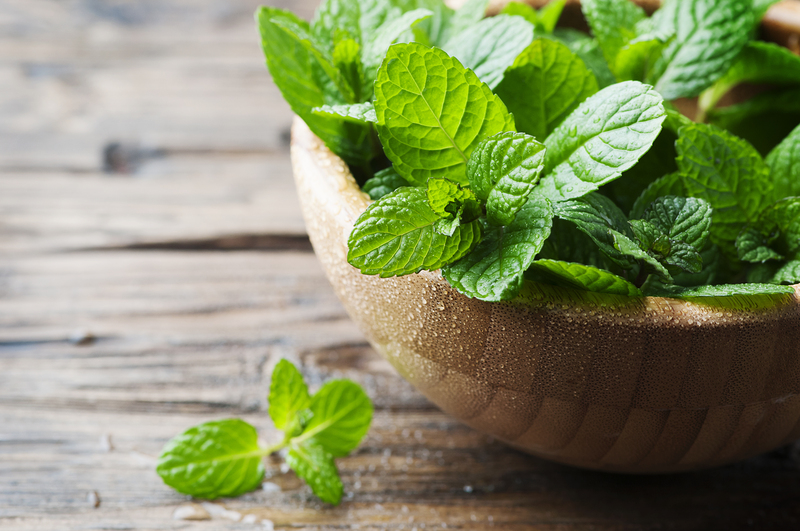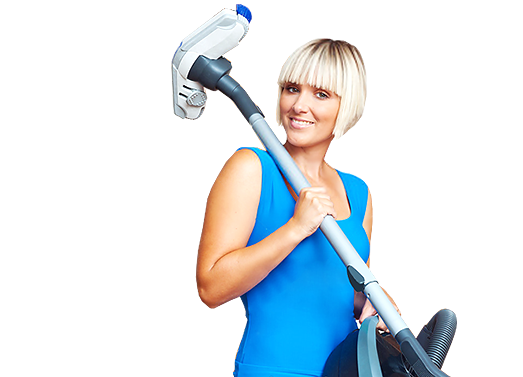Mastering the Art of a Mold-Free Bathroom
Posted on 08/09/2025
Mastering the Art of a Mold-Free Bathroom
Mold is one of the most common household nuisances, especially in bathrooms where humidity and dampness create the perfect environment for fungal growth. Achieving a mold-free bathroom isn't just about aesthetics--it's crucial for your family's health and the integrity of your home. This comprehensive guide will help you understand the causes, prevention techniques, cleaning strategies, and long-term maintenance tips for completely mastering the art of a mold-free bathroom.
Understanding Bathroom Mold: Causes and Dangers
Before you can prevent or remove mold, it's essential to know why bathroom mold appears and why keeping your bathroom free from mold is so important.
What Causes Mold in Bathrooms?
- High Humidity: Bathroom showers and baths lead to excess moisture, making bathrooms especially vulnerable to mold.
- Poor Ventilation: Without proper air circulation, moisture lingers, inviting mold spores to settle and thrive.
- Leaky Plumbing: Dripping pipes or fixtures create a persistent damp environment ideal for mold growth.
- Porous Surfaces: Grout, caulk, and certain types of wallpaper absorb moisture, offering mold places to colonize.
Bacteria and allergens from mold can trigger asthma, allergies, and respiratory issues. Preventing or removing mold from the bathroom is not just about cleanliness--it's a crucial part of maintaining a healthy home environment.

Essential Steps for a Mold-Free Bathroom
Mastering a mold-free bathroom requires a combination of preventative measures, regular cleaning, and an understanding of the materials in your bathroom. Here's how you can ensure your space remains pristine and healthy:
1. Improve Bathroom Ventilation
- Use Exhaust Fans: Always run an exhaust fan during and after showers. Ideally, leave it on for at least 20-30 minutes post-shower.
- Open Windows: If safe and possible, open windows while bathing to allow humid air to escape and fresh air to circulate.
- Install a Dehumidifier: In bathrooms prone to high humidity, a small dehumidifier can dramatically reduce moisture.
Tip: Regularly clean your bathroom fan to keep it working efficiently.
2. Address Plumbing Issues Promptly
- Check for Leaks: Inspect under sinks, around tubs, and behind toilets for leaks regularly.
- Repair Caulking and Grout: Seal any cracks or gaps immediately to prevent water from seeping behind surfaces.
- Replace Old Fixtures: Swap out any worn or leaking fixtures to keep your bathroom mold-free for the long term.
3. Use Mold-Resistant Materials
- Mold-Resistant Drywall (Greenboard): Ideal for bathroom walls and ceilings.
- Mildew-Resistant Paint: Choose bathroom-specific paints for long-lasting barrier protection.
- Non-Porous Tiles: Ceramic, porcelain, or glass tiles are easy to clean and don't absorb moisture.
Daily Habits for a Mold-Free Bathroom
Incorporating a few daily habits into your routine can greatly reduce the risk of mold developing in your bathroom:
- Squeegee or Wipe Down Wet Surfaces: After each shower, run a squeegee over walls, glass doors, and tile floors. Even a quick towel dry can prevent lingering moisture.
- Hang Towels to Dry: Never leave damp towels on the floor or crumpled in a hamper. Hang them to dry completely, preferably outside the bathroom.
- Empty Trash Bins Regularly: Mold can thrive in damp tissues or hygiene products left in trash bins.
- Keep Showers Curtain Open: After use, spread the curtain open to help air circulate and dry it out quickly.
Deep Cleaning: Mold Removal in the Bathroom
Even with the best prevention methods, some bathrooms develop mold. In these cases, removing mold safely and effectively is essential. Here's how to reclaim your mold-resistant bathroom:
Safety First!
- Wear rubber gloves, goggles, and a mask to protect yourself from spores.
- Ensure ventilation is at maximum--open windows and doors where possible.
Effective Mold Removal Methods
- White Vinegar Spray: Fill a spray bottle with undiluted white vinegar. Spray onto moldy surfaces and let sit for at least an hour. Scrub with a brush and rinse with water.
- Baking Soda Solution: Dissolve 1/4 tablespoon of baking soda in a spray bottle of water. Spray, scrub, and rinse. Baking soda is safe and helps deodorize.
- Hydrogen Peroxide (3%): Spray directly on mold spots, let sit for 10 minutes, scrub, and rinse thoroughly.
- Commercial Mold Cleaners: For stubborn spots, consider a commercial mold-removing spray. Always follow manufacturer instructions.
Never mix bleach and ammonia or commercial cleaners, as dangerous fumes can occur!
Cleaning Grout and Caulk
- Use a dedicated grout brush to scrub mold out of tile grout lines.
- If stains persist, renew grout or replace caulk to prevent regrowth.
Natural Alternatives
- Tee tree oil diluted with water makes a powerful natural mold remover.
- Lemon juice can lighten stains and freshen the bathroom.
Long-Term Strategies: Keeping Mold Out for Good
Mastering the art of a mold-free bathroom extends beyond immediate fixes; it's about establishing a lasting defense. Here's how:
Set a Cleaning Schedule
- Wipe Down Surfaces Weekly: Regular cleaning prevents soap scum and moisture buildup.
- Deep Clean Monthly: Pay extra attention to grout, behind the toilet, and under the sink.
- Wash Bath Mats and Curtains: Launder regularly to remove spores and prevent mildew.
Target Trouble Spots
- Behind toilets and under sinks can easily be overlooked and accumulate mold.
- Ceilings and corners are common condensation points--inspect often.
Upgrade for Excellence
- Replace old caulking and grout: Use mold-resistant products to seal seams and edges.
- Invest in quality paint: Apply an antimicrobial bathroom paint every few years for added protection.
- Consider glass shower doors: They dry quickly and reduce the surface area prone to mold compared to fabric curtains.

Frequently Asked Questions: Mold-Free Bathroom Expertise
What's the best mold prevention tip for small bathrooms?
Maximize ventilation. Smaller spaces trap moisture faster. Use a high-quality exhaust fan and avoid storing extra towels or rugs in the room.
Can I use bleach to kill mold in my bathroom?
Bleach can be effective on non-porous surfaces; however, it may not penetrate porous grout or drywall fully. Use it sparingly and opt for safer alternatives like vinegar for everyday cleaning.
Is black mold in the bathroom dangerous?
Some black molds can release mycotoxins, which may cause serious health issues. Treat all mold as potentially harmful and address it promptly.
Do air purifiers help keep a bathroom mold-free?
Air purifiers with HEPA filters can reduce mold spores in the air, but managing humidity and cleaning are more effective for lasting results in bathrooms.
How often should grout be resealed?
Grout should generally be resealed every 6-12 months in moist areas to block moisture absorption and stave off mold.
Closing Thoughts: Master Your Mold-Free Sanctuary
Mastering the art of a mold-free bathroom is an ongoing process that combines smart design, daily care, and effective cleaning. By understanding where mold thrives, employing preventative strategies, and using proven cleaning techniques, you can transform your bathroom into a healthy, beautiful retreat. Regular maintenance of your fixtures, vents, and surfaces is the key to long-term success.
Take these expert tips to heart and embark on your journey to a mold-resistant bathroom. A clean, fresh-smelling, and healthy space awaits!
- Start with small daily changes--you'll see big results.
- Be vigilant, proactive, and consistent.
- Set reminder alerts for bathroom maintenance or create a cleaning checklist for your household.
Ready to master your bathroom and keep it mold-free? Share these tips, develop a reliable cleaning routine, and enjoy the peace of a healthy, beautiful home for years to come.




